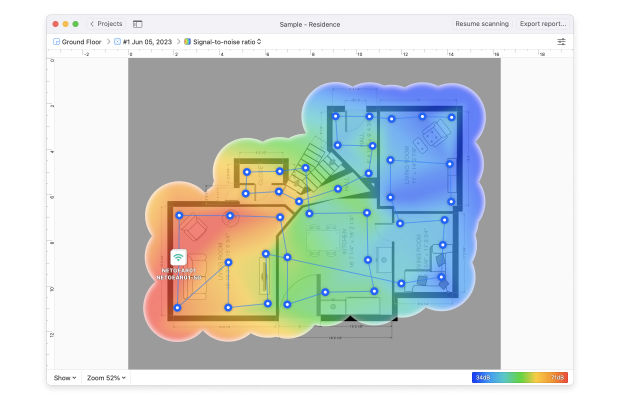What Is 802.11ac?
802.11ac is a wireless networking standard. More specifically, it’s the fifth generation of the IEEE 802.11 set of protocols for implementing wireless local area network (WLAN) computer communication.

The 802.11ac standard was released in 2014 to provide high-throughput wireless local area networks on the 5 GHz band. The comparison table below shows how 802.11ac WiFi stacks up against other WiFi standards that came before and after it:
| Generation | Wi‑Fi 7 |
| IEEE Standard | 802.11be |
| Maximum Throughput (Mbit/s) | 40,000 |
| Released | TBA |
| Frequency Band (GHz) | 2.4/5/6 |
| Generation | Wi‑Fi 6E |
| IEEE Standard | 802.11ax |
| Maximum Throughput (Mbit/s) | 600 to 9,608 |
| Released | 2020 |
| Frequency Band (GHz) | 2.4/5/6 |
| Generation | Wi‑Fi 6 |
| IEEE Standard | 802.11ax |
| Maximum Throughput (Mbit/s) | 600 to 9,608 |
| Released | 2019 |
| Frequency Band (GHz) | 2.4/5 |
| Generation | Wi‑Fi 5 |
| IEEE Standard | 802.11ac |
| Maximum Throughput (Mbit/s) | 433 to 6,933 |
| Released | 2014 |
| Frequency Band (GHz) | 5 |
| Generation | Wi‑Fi 4 |
| IEEE Standard | 802.11n |
| Maximum Throughput (Mbit/s) | 72 to 600 |
| Released | 2008 |
| Frequency Band (GHz) | 2.4/5 |
| Generation | Wi‑Fi 3 |
| IEEE Standard | 802.11g |
| Maximum Throughput (Mbit/s) | 6 to 54 |
| Released | 2003 |
| Frequency Band (GHz) | 2.4 |
| Generation | Wi‑Fi 2 |
| IEEE Standard | 802.11a |
| Maximum Throughput (Mbit/s) | 6 to 54 |
| Released | 1999 |
| Frequency Band (GHz) | 5 |
| Generation | Wi‑Fi 1 |
| IEEE Standard | 802.11b |
| Maximum Throughput (Mbit/s) | 1 to 11 |
| Released | 1999 |
| Frequency Band (GHz) | 2.4 |
| Generation | Wi‑Fi 0 |
| IEEE Standard | 802.11 |
| Maximum Throughput (Mbit/s) | 1 to 2 |
| Released | 1997 |
| Frequency Band (GHz) | 2.4 |
As you can see, 802.11ac is the successor to 802.11n. The biggest difference between the two WiFi standards as far as end-users are concerned is the fact that the newer standard supports a maximum throughput of up to 6,933 Mbit/s. That’s a huge jump from 600 Mbit/s, a maximum throughput supported by 802.11n.


